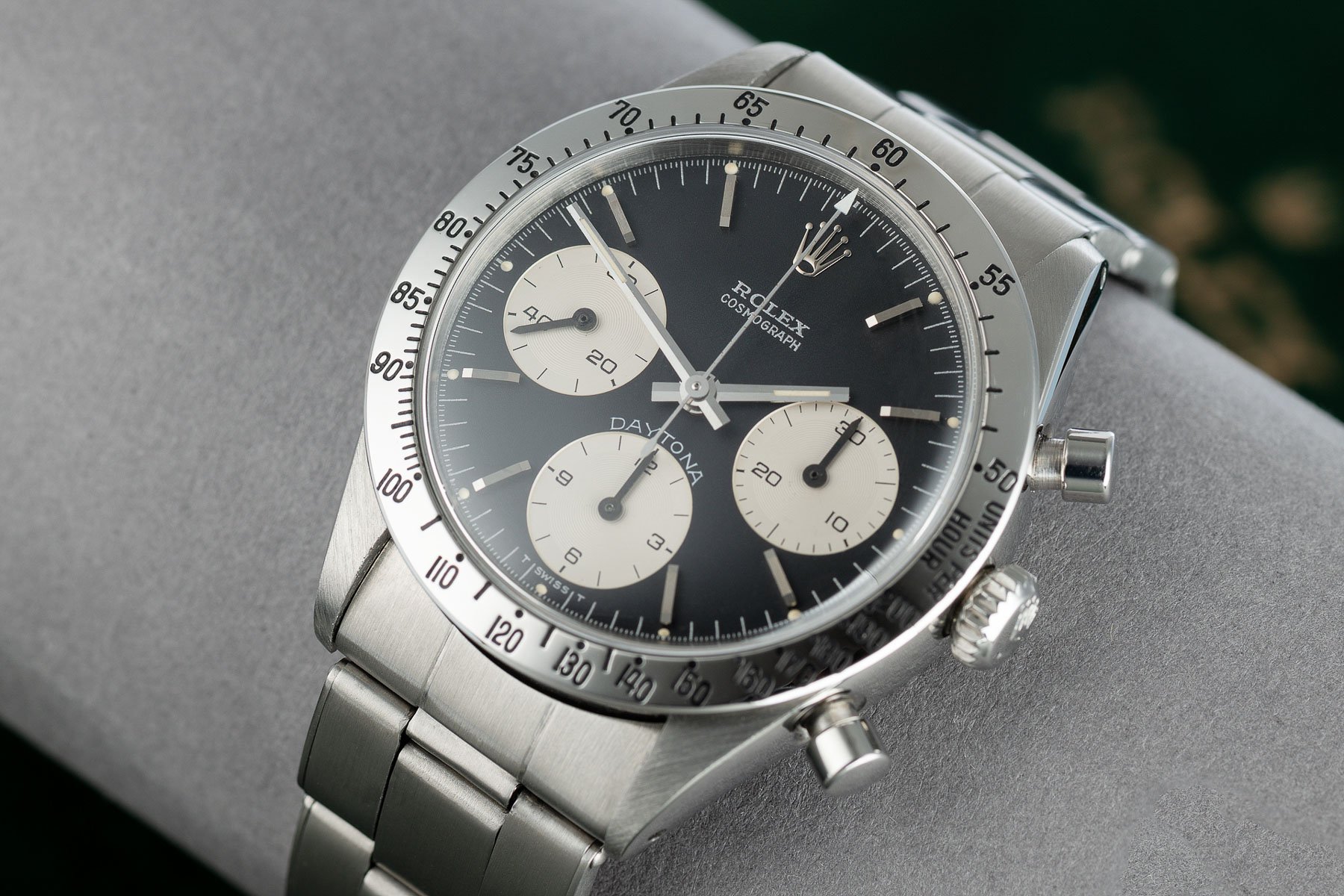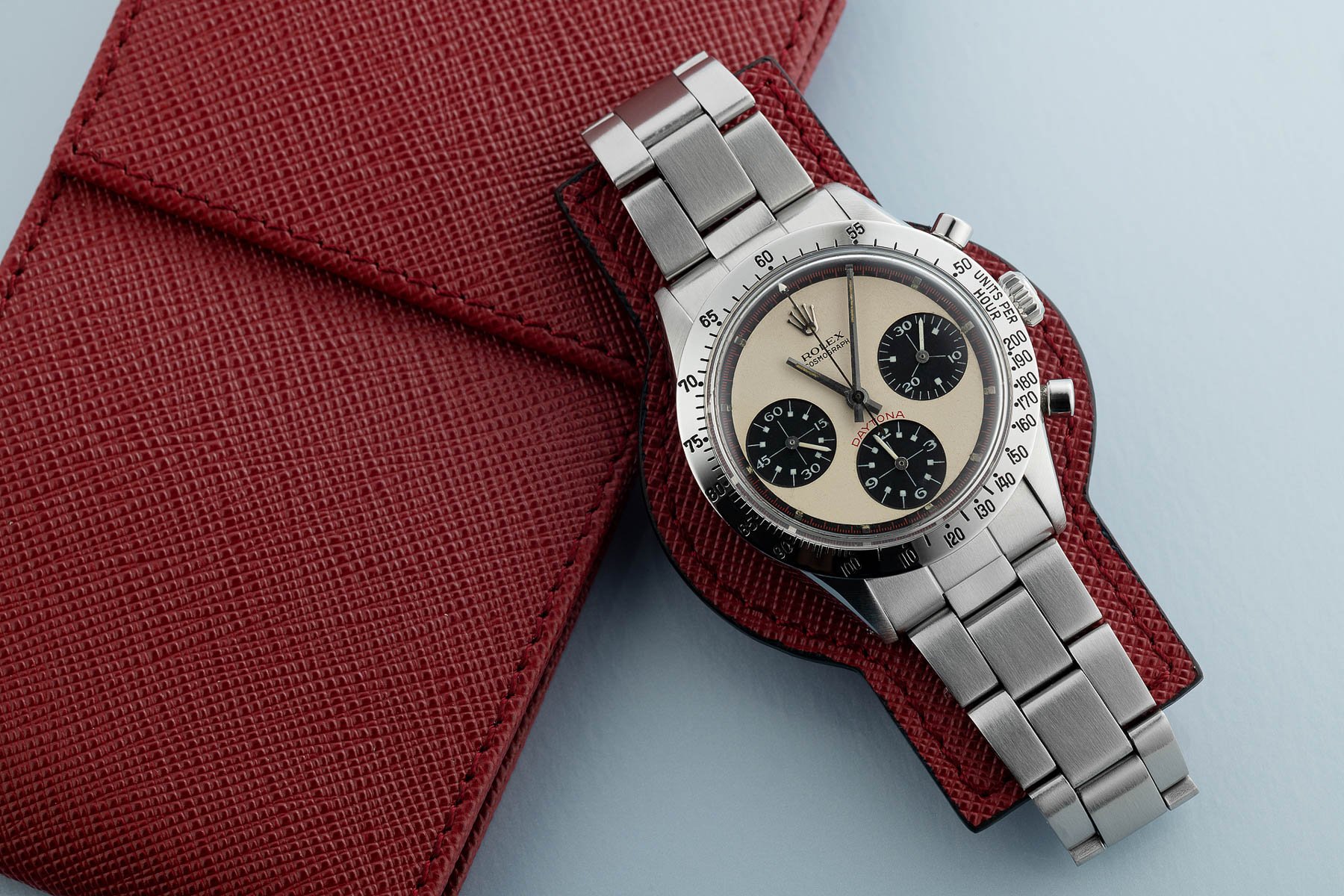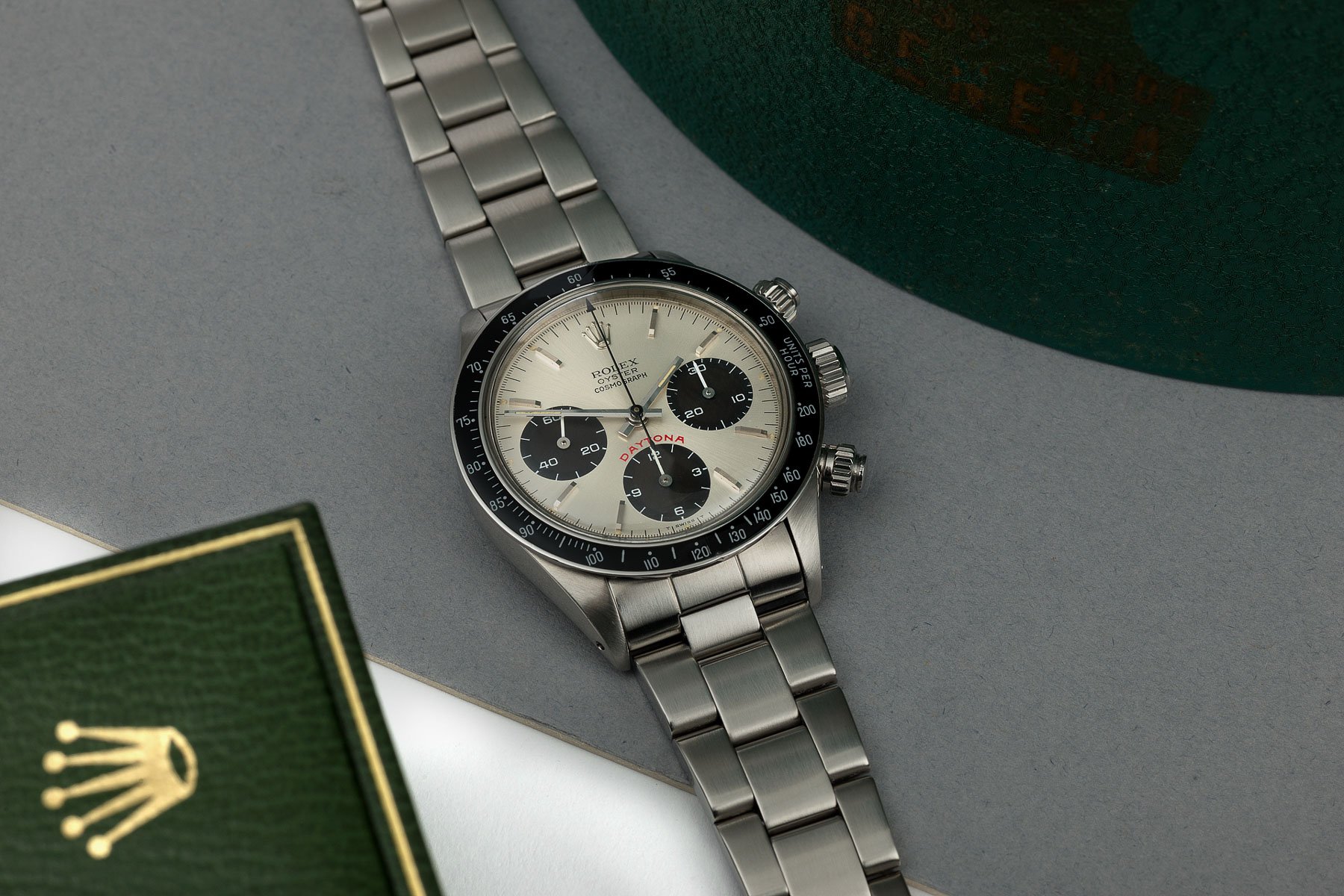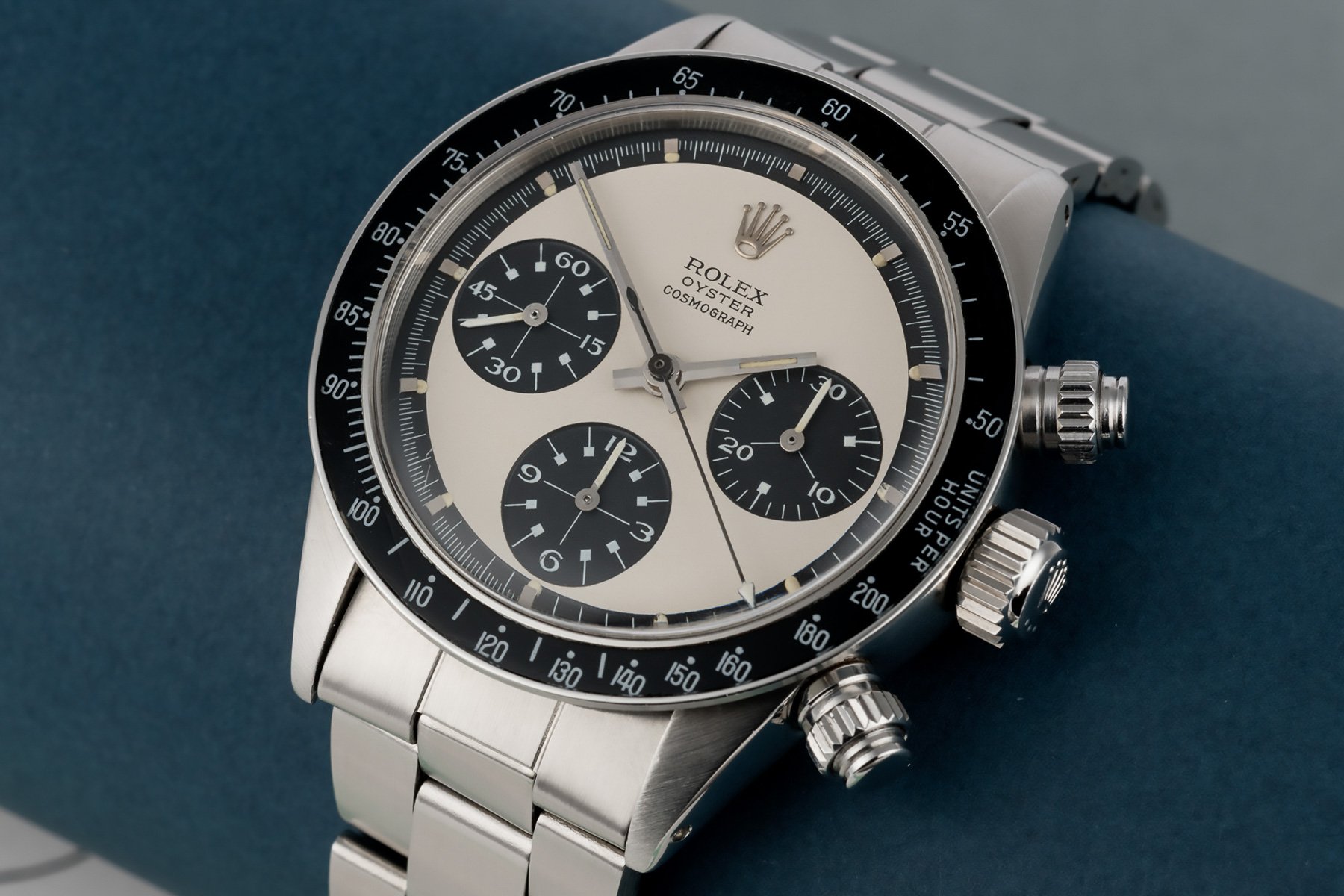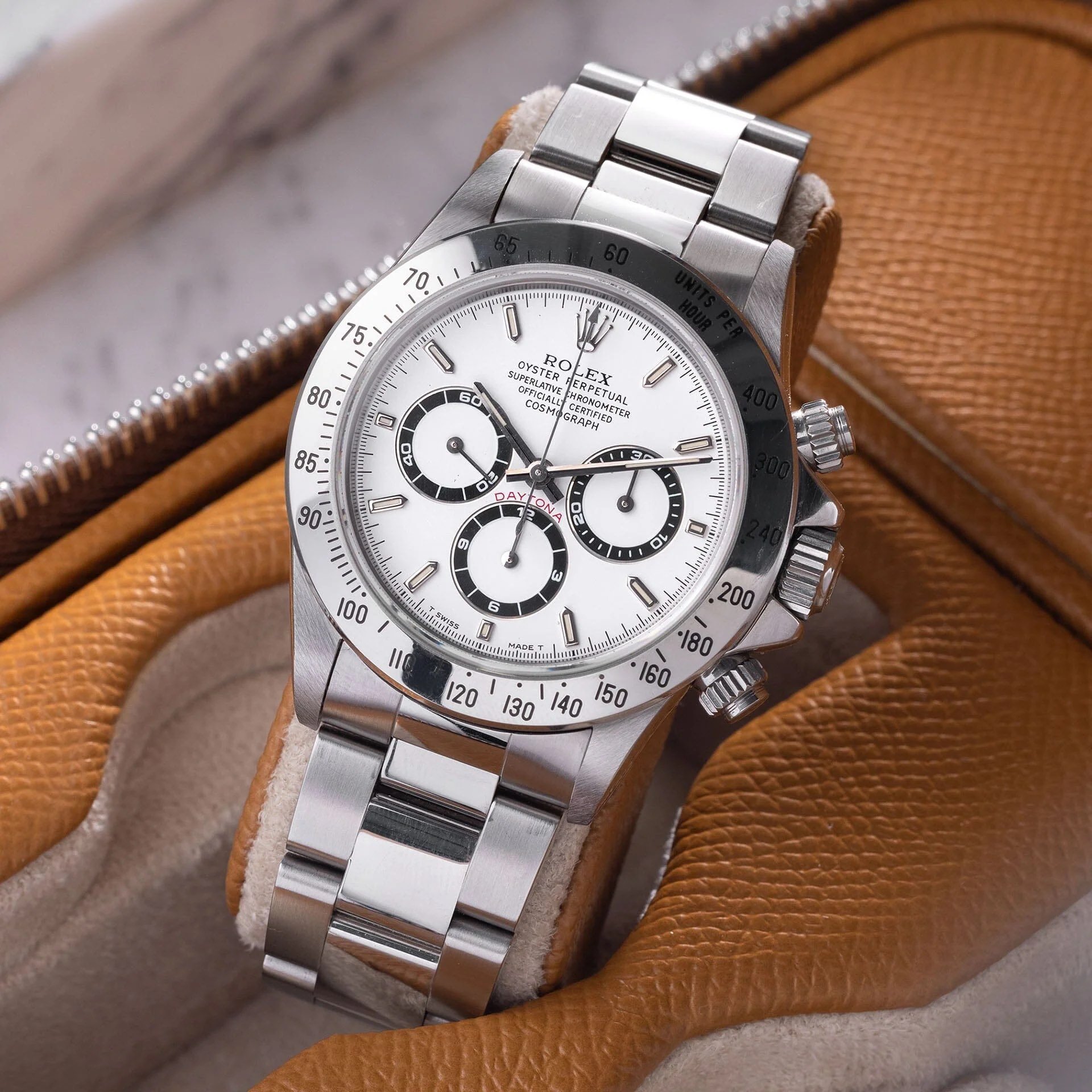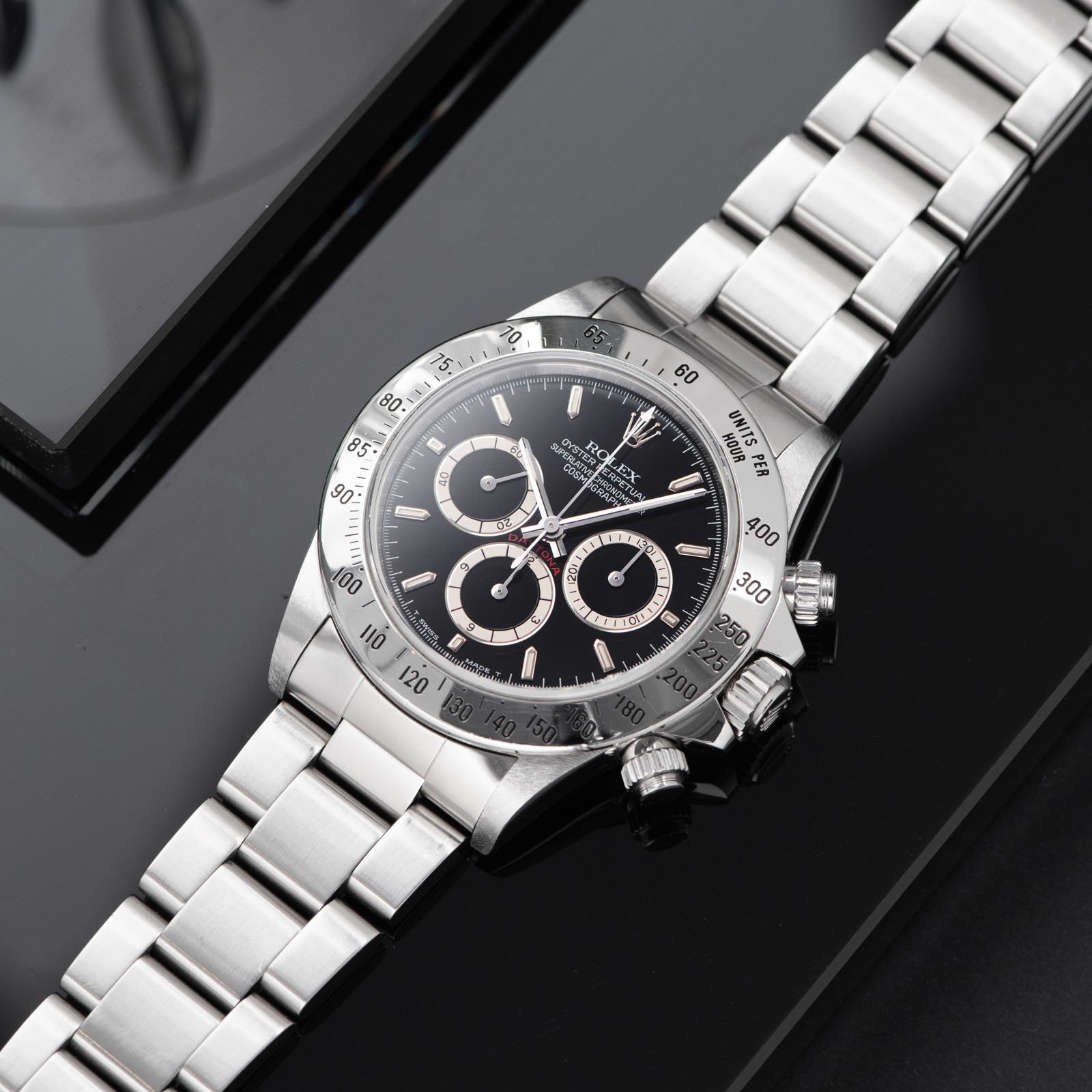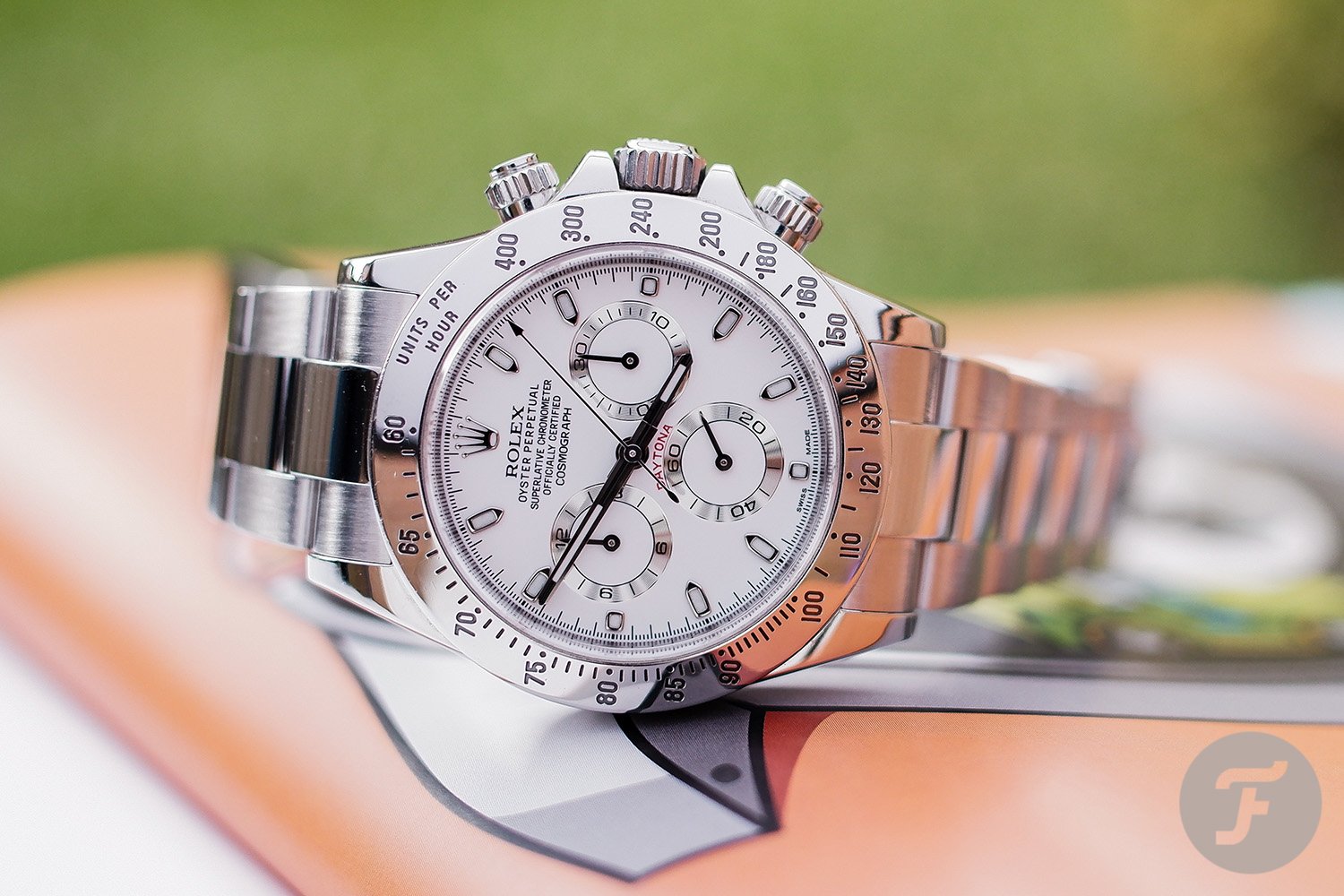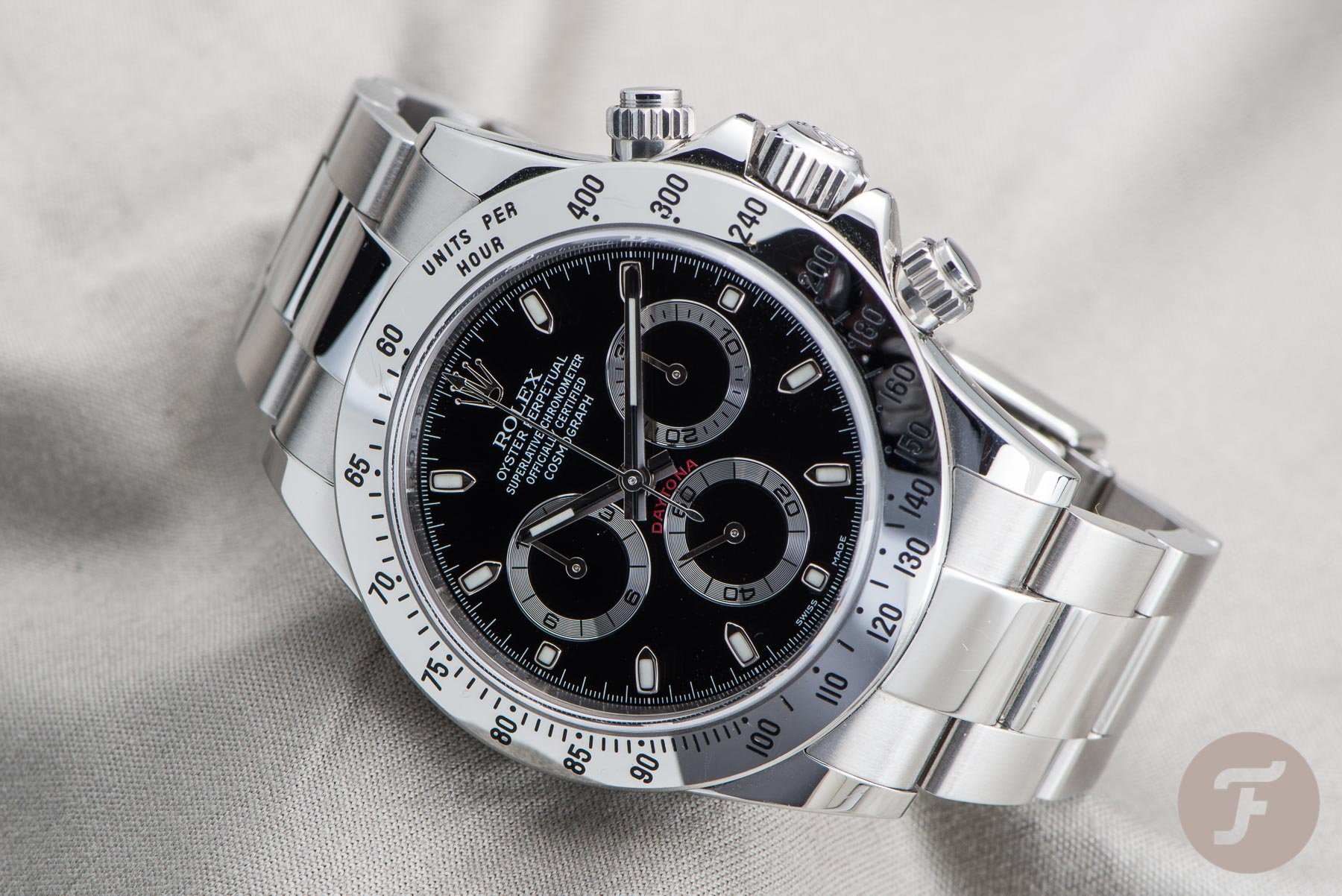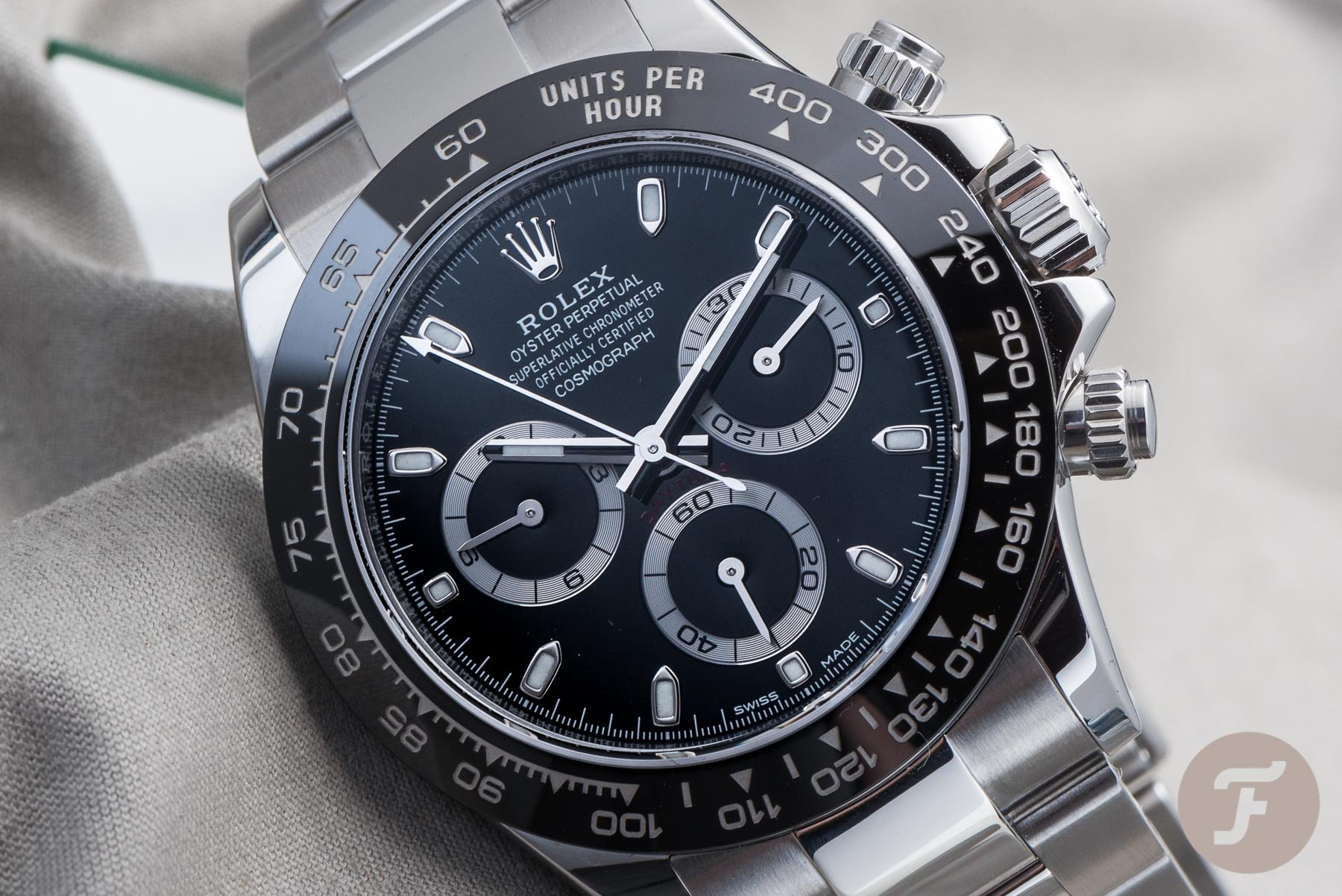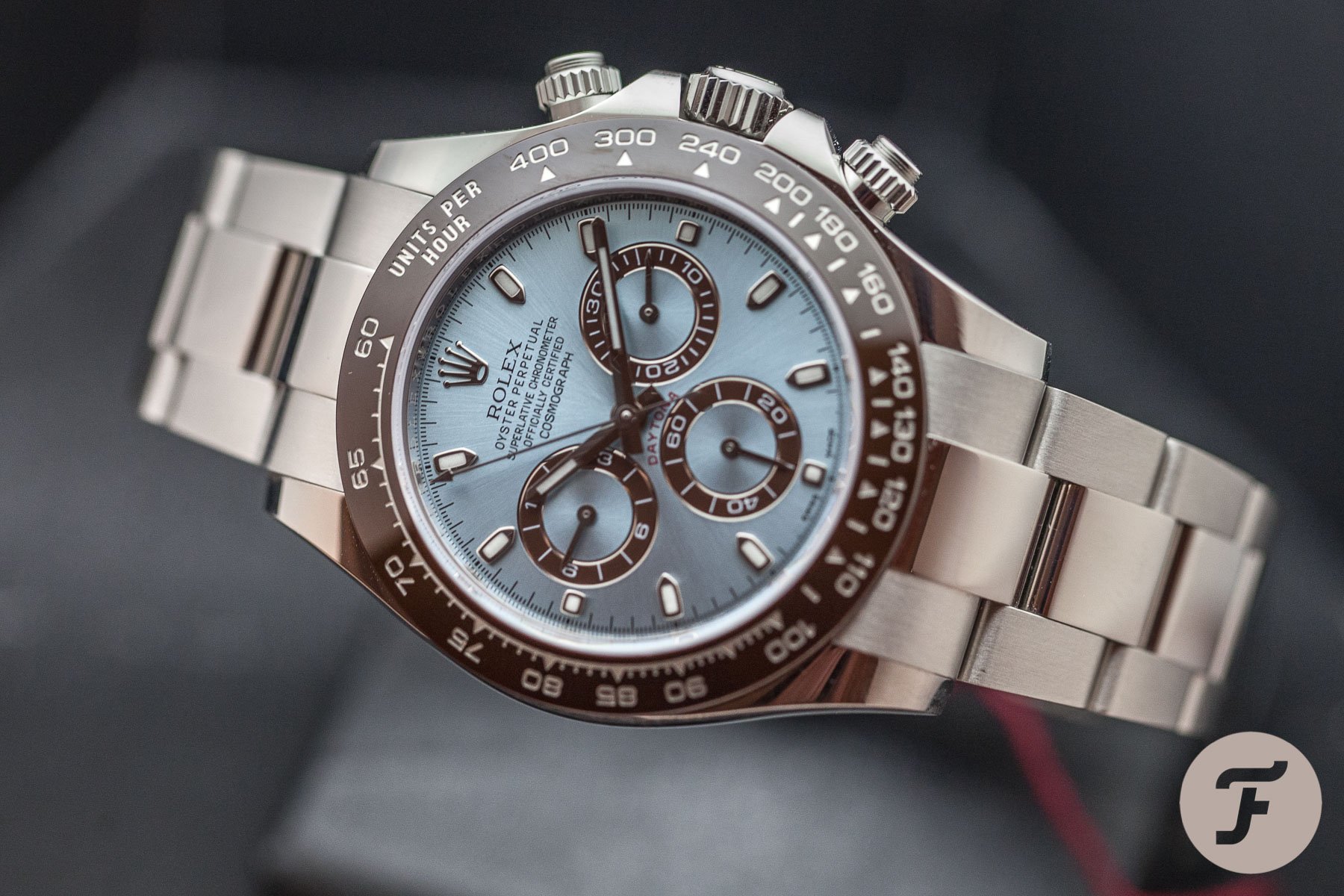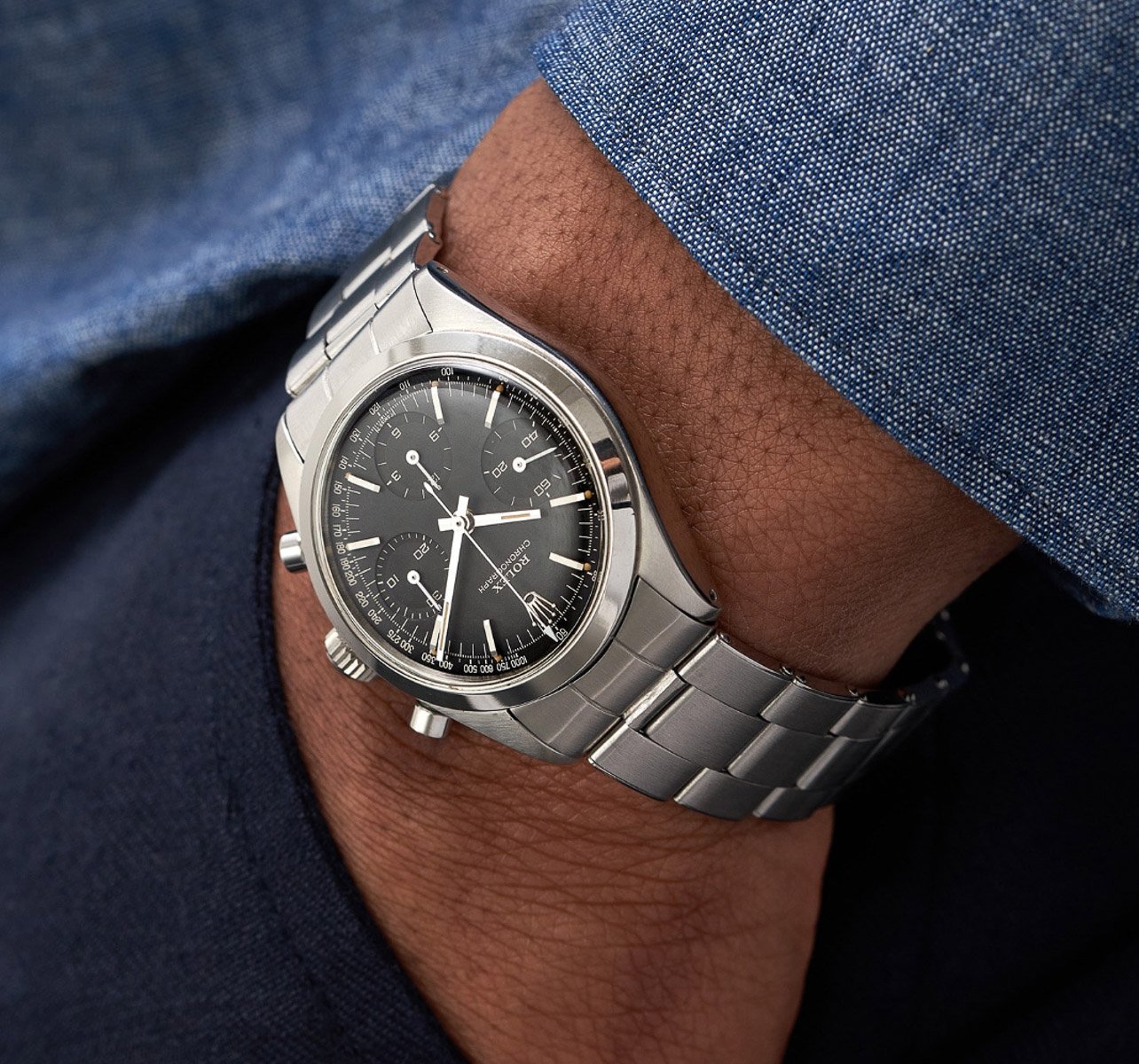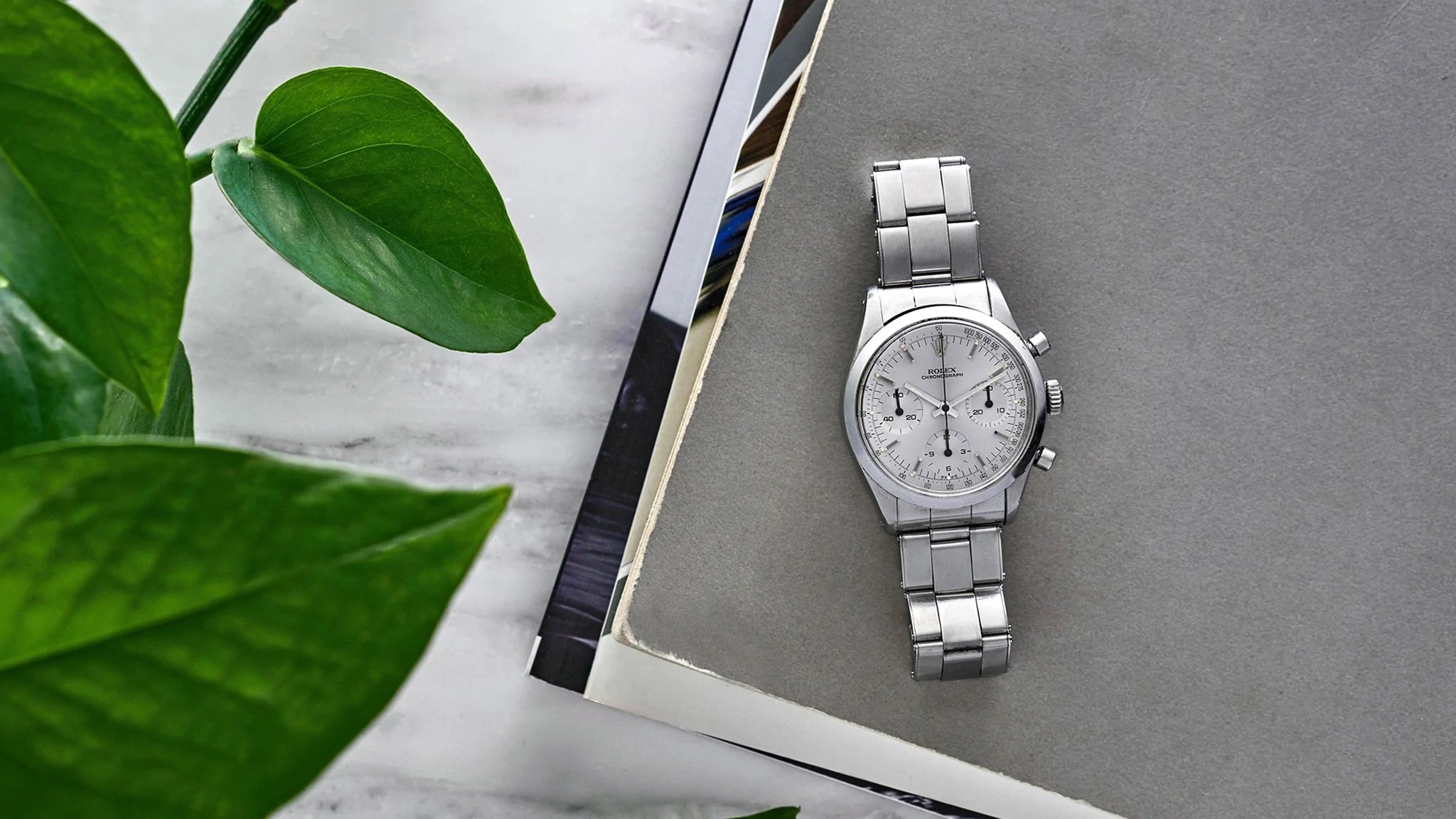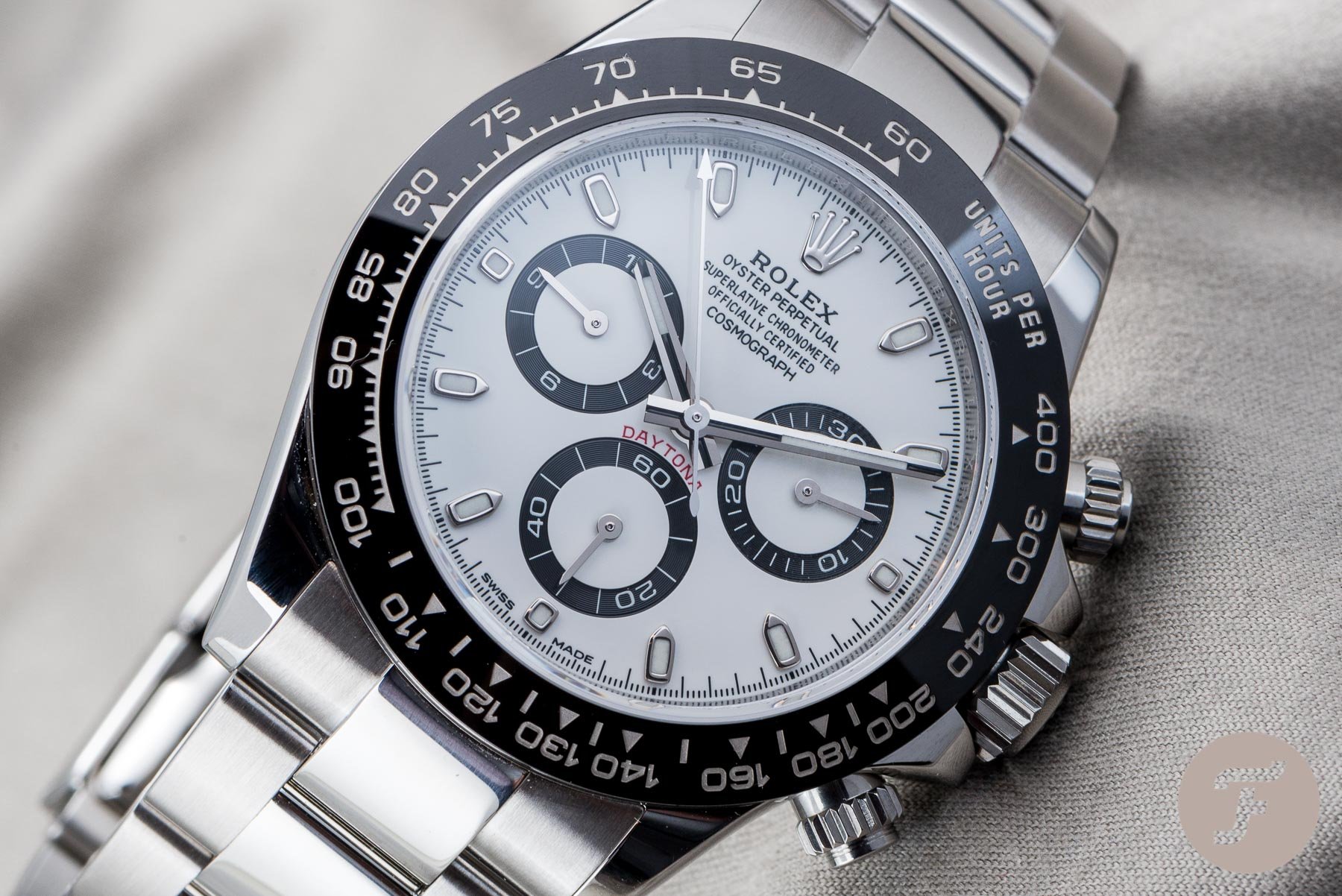Fratello’s Top 5 Rolex Daytona References Ever Produced
Another Friday, another Top 5! In this series, we take one classic watch and choose our five favorite references ever produced. Four of these references will be based on the historical importance of the specific watch in the grand scheme of things. Though there may be some overlap, it’s not a question of which references are the most collectible or of the highest value on the market. The fifth pick is our Fratello favorite that considers the current market price and collectability, potentially making it a sleeper reference. As such, the last pick could be described as our wild card. This week, we’ll take a look at the Rolex Cosmograph Daytona. What are the best references from the line of this iconic chronograph?
It’s a special year when it comes to the Rolex Daytona. Looking ahead to Watches and Wonders later this month, there are quite a few predictions that we will see an evolution of the model. I’m not counting on it since Rolex is known not to cater to the crowd’s wishes. Still, the moment would be perfect as the first Daytona ref. 6239 debuted in 1963. Additionally, there is the obvious question of whether the current Daytona needs an update. Do you think it needs an update in terms of design, or is the famous in-house caliber 4130 ready for a refresh? The answers to those questions will come in just a couple of weeks. My guess? A special 60th-anniversary edition of the current Daytona. But we’re here to talk about the best five Daytona references from the past, so let’s focus on that first.
Rolex Cosmograph Daytona ref. 6239
The logical first step in this list is the first Rolex Daytona reference. Rolex introduced the Daytona ref. 6239 in 1963 as the Rolex Cosmograph. “Daytona” did not appear on the dial until a year later. Compared to the ref. 6238 “Pre-Daytona,” the first actual Daytona looks much sportier and bolder. It’s a direct result of Rolex using contrasting sub-dials and moving the tachymeter scale from the dial to the steel bezel. Rolex utilized the same manual-wind Valjoux caliber 72B and 722 for the Daytona ref. 6239 as it did for the previous ref. 6238. Later models featured the caliber 722-1, a slightly improved version of the 722 movement. A remarkable detail is that the ref. 6238 and the first Daytona models were in production at the same time for several years.
The Daytona ref. 6239 was produced from 1963 to 1969 with several dial variations. The original Daytona debuted with the choice of a black dial and white sub-dials or a white dial with black sub-dials. Rolex swapped the white dial for the well-known silver dials for the later series. On top of that, Rolex also introduced the famous “Paul Newman” Exotic dial for both the ref. 6239 and ref. 6241 with the black bezel. These have become the famous Daytona models that people pay a lot of money for. And honestly, a “Paul Newman” was the first vintage Daytona that caught my eye some 20 years ago. Prices for this legendary Daytona ref. 6239 start at roughly €50K and move up to the hundreds of thousands for rare Exotic-dial pieces in excellent condition. Considering the cultural impact of the first Daytona, that is no surprise.
Rolex Cosmograph Daytona ref. 6263
You could contend that we should get into the modern automatic Daytona after this, but that would be a rather big leap. This is why we selected the Daytona ref. 6263. It’s the last of the manual-winding references and came with a black bezel and screw-down pushers. The reference presented a tougher and bulkier overall presence than the earlier references with pump pushers. The ref. 6263 was in production from 1971 until roughly 1987 when the first automatic Daytona took its place. Inside the 37mm case, Rolex equipped the ref. 6263 with the Valjoux 727 movement. This upgraded version of the Valjoux 722-1 was based on the Valjoux 72A. The most important change was an increase in operating frequency from 18,000 to 21,000vph for greater accuracy.
The Daytonas from the mid-1980s are the most modern vintage Daytonas that you can get. They look awesome! One specific version jumps out beside the regular versions, and that’s the ref. 6263 with the black and white Exotic dial. The dial loses the red elements that spice up the previous “Paul Newman” models, but the result is one of the best-looking Daytonas, in my opinion. There is a certain seriousness that I adore in comparison to the frivolity of the Exotic dials with the red accents. As they are rare, they are among the most sought-after and expensive Rolex Daytona models. That said, the regular silver- and black-dial versions form the perfect bridge between the old and new or manual-winding and automatic models. Prices for them start at roughly €80K and move up to several hundreds of thousands for the rarer versions.
Rolex Cosmograph Daytona ref. 16520
Now we move on to the first watch that is making its second appearance in these Top 5 lists. If you are a regular reader of this series, you probably know that I also included the Rolex Daytona ref. 16520 in the list of most important Zenith El Primero references. While the significance of the Daytona in the existence of Zenith’s El Primero legacy is very important, I also did that with a smile. But there is no denying that the ref. 16520 was important for several reasons. As the first automatic Daytona, it represented a new era for Rolex’s famous chronograph. And with a new era came a new movement and a completely new design. When Rolex introduced the ref. 16520, it was clear that it was not just another incremental evolution from the brand. The new Daytona introduced a new and larger 39mm case, an updated bezel design, a new bracelet, and a new movement.
Together with the stainless steel models, Rolex also introduced the Daytona ref. 16523 in two-tone (steel and gold) and ref. 16528 in yellow gold. But it’s all about the stainless steel model that came with a black or white dial with a hint of red for the “Daytona” name above the 12-hour counter at 6 o’clock. Inside the case, Rolex introduced its new caliber 4030. This automatic chronograph movement was based on the famous Zenith El Primero. Rolex reduced the operating frequency from 36,000vph to 28,800vph, removed the date function, modified the escapement system, and replaced the balance spring. All of this made for a more reliable movement. Over three decades later, prices for the “Zenith Daytona” start at roughly €20K and move up to €45K for a “Patrizzi dial” or €125K for a rare “Porcelain dial” version.
Rolex Cosmograph Daytona ref. 116520
This brings us to the fourth entry of this list. The follow-up to the “Zenith Daytona” introduced Rolex’s first in-house-produced chronograph movement. Consequently, it is a monumental release in the Daytona lineage. Reference 116520 came out in 2000 and ensured that every Rolex watch from that moment on was created completely in-house. The ref. 116520 came with a black or white dial, and our own Ben Hodges proudly owns a white-dial version. When it comes to specs, you get the standard set of specifications that most of you will know by heart. The watch features a “40mm” case that is 12mm thick. But as Ben said in his review, the actual size is smaller than Rolex indicates, at about 38.5mm.
Rolex equipped the watch with its all-new chronograph caliber 4130. The 44-jewel automatic movement operates at 28,800vph and has a 72-hour power reserve. The movement was in development for five years, and Rolex made it a strict goal to reduce the number of parts. Doing so improved the overall performance and reliability and made the caliber easier to service. The movement uses 201 individual components, a reduction of 60% compared to the previous Zenith El Primero-based caliber 4030. Furthermore, it features a vertical clutch and a Parachrom hairspring. This hairspring provides greater antimagnetic properties as well as improved shock protection and temperature resistance. Prices for the ref. 116520 start just under €20K and moves up to €45K for versions with discolored or rare dials.
Rolex Cosmograph Daytona ref. 116500LN
This brings us to the fifth and last entry on this list. It could only be one Daytona, and that is the current ref. 116500LN. From a technical standpoint, nothing changed, and the same caliber 4130 powers this watch. But Rolex did update the overall looks significantly. The current Daytona came out in 2016 and introduced a black Cerachrom bezel to the stainless steel models. It’s a step that I greatly appreciated as it brought back the look of the vintage black-bezel models. As a result, it gained a lot of praise from Rolex collectors and became the most popular Rolex model in the catalog over the last couple of years.
But it was not the first Daytona that was fitted with a ceramic bezel. In 2013, Rolex unveiled the famous platinum version of the iconic chronograph that featured a chocolate-brown ceramic bezel to celebrate the 50th anniversary of the Daytona. This ref. 116506 has become one of the most recognizable and popular current Daytona models, alongside the popular yellow gold “John Mayer” Daytona ref. 116508. I love the current stainless steel Daytona models the best for their updated overall aesthetic, which makes them more visually exciting than the references with stainless steel bezels. It makes me curious to find out whether Rolex will surprise us with something new during Watches and Wonders this year. Honestly, I am not done with the current Daytona. It’s the deserved number five on our list. But hold on a second…
Rolex Chronograph ref. 6238 “Pre-Daytona”
We can’t forget our wild card! Yes, I know; usually, the wild card is number five, but we had to make an exception this time. There would be no Daytona if there were no Rolex ref. 6328 “Pre-Daytona.” There is a reason why Rolex fans consider it part of the Daytona lineage. With the ref. 6238, Rolex moved away from the classic design of the chronographs that came before it. The model was in production from 1962 to 1968. As I explained in an article about the “Pre-Dayton,” the first ref. 6238 models still featured the old-style leaf hands and a transitional dial with diamond markers. Rolex updated those first dial designs with a more modern dial featuring baton indices and also replaced the hands with baton hands. You will only find the words “Rolex” and “Chronograph,” with the coronet as the 12 o’clock marker on the dial. These design steps took Rolex chronographs from the past to the present. Therefore, the “Pre-Daytona” plays such a special part in Daytona history.
The “Pre-Daytona” features a beautiful 36mm case with pump pushers and an oversized crown. It was produced in stainless steel, 14K yellow gold, and 18K yellow gold. Add the rivet bracelet in the same materials, and you get a stunning-looking chronograph. There were silver, gray, and black dials with tachymeter scales printed on them that all look equally stunning. Inside the cases, Rolex used two movements for the ref. 6238. The brand started with the legendary Valjoux 72B caliber. The second movement was the Valjoux 722, which was essentially an updated version of the Valjoux 72B. And let’s not forget that this is also a Bond watch. George Lazenby wore a special ref. 6238 with a red chronograph seconds hand in On Her Majesty’s Secret Service. The “Pre-Daytona” is vintage Rolex bliss that can be yours for €45K up to €200K.
Final thoughts
We realize that you might not agree with all the picks for this list. That’s why we would love this to be the start of a bigger discussion. Let us know your picks for the most relevant references in the development of the Rolex Cosmograph Daytona. And also tell us what you think Rolex will introduce to the Daytona line for Watches and Wonders this year. We will see you next week for another Top 5 list of references for a different classic watch.

